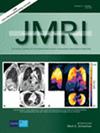Evaluating the Potential of Quantitative Susceptibility Mapping for Detecting Iron Deposition of Renal Fibrosis in a Rabbit Model
Abstract
Background
As ferroptosis is a key factor in renal fibrosis (RF), iron deposition monitoring may help evaluating RF. The capability of quantitative susceptibility mapping (QSM) for detecting iron deposition in RF remains uncertain.
Purpose
To investigate the potential of QSM to detect iron deposition in RF.
Study Type
Animal model.
Animal Model
Eighty New Zealand rabbits were randomly divided into control (N = 10) and RF (N = 70) groups, consisting of baseline, 7, 14, 21, and 28 days (N = 12 in each), and longitudinal (N = 10) subgroups. RF was induced via unilateral renal arteria stenosis.
Field Strength/Sequence
3 T, QSM with gradient echo, arterial spin labeling with gradient spin echo.
Assessment
Bilateral kidney QSM values (χ) in the cortex (χCO) and outer medulla (χOM) were evaluated with histopathology.
Statistical Tests
Analysis of variance, Kruskal–Wallis, Spearman's correlation, and the area under the receiver operating characteristic curve (AUC). P < 0.05 was significant.
Results
In fibrotic kidneys, χCO decreased at 7 days ([−6.69 ± 0.98] × 10−2 ppm) and increased during 14–28 days ([−1.85 ± 2.11], [0.14 ± 0.58], and [1.99 ± 0.60] × 10−2 ppm, respectively), while the χOM had the opposite trend. Both significantly correlated with histopathology (|r| = 0.674–0.849). AUC of QSM for distinguishing RF degrees was 0.692–0.993. In contralateral kidneys, the χCO initially decreased ([−6.67 ± 0.84] × 10−2 ppm) then recovered to baseline ([−4.81 ± 0.89] × 10−2 ppm), while the χOM at 7–28 days ([2.58 ± 1.40], [2.25 ± 1.83], [2.49 ± 2.11], [2.43 ± 1.32] × 10−2 ppm, respectively) were significantly higher than baseline ([0.54 ± 0.18] × 10−2 ppm).
Data Conclusion
Different iron deposition patterns were observed in RF with QSM values, suggesting the potential of QSM for iron deposition monitoring in RF.
Plain Language Summary
Renal fibrosis (RF) is a common outcome in most kidney diseases, leading to scarring and loss of kidney function. Increasing evidence suggests that abnormal iron metabolism plays an important role in RF. This study used a technique called quantitative susceptibility mapping (QSM) to measure kidney iron levels in rabbits with RF. Specifically, rabbits with advanced RF exhibited higher kidney iron concentrations, and moderate to strong correlations between QSM values and histopathology demonstrated that QSM could accurately detect changes in iron levels and assess RF severity. Overall, QSM shows promise as a tool for monitoring iron deposition in RF progression.
Evidence Level
2
Technical Efficacy
Stage 3

 求助内容:
求助内容: 应助结果提醒方式:
应助结果提醒方式:


